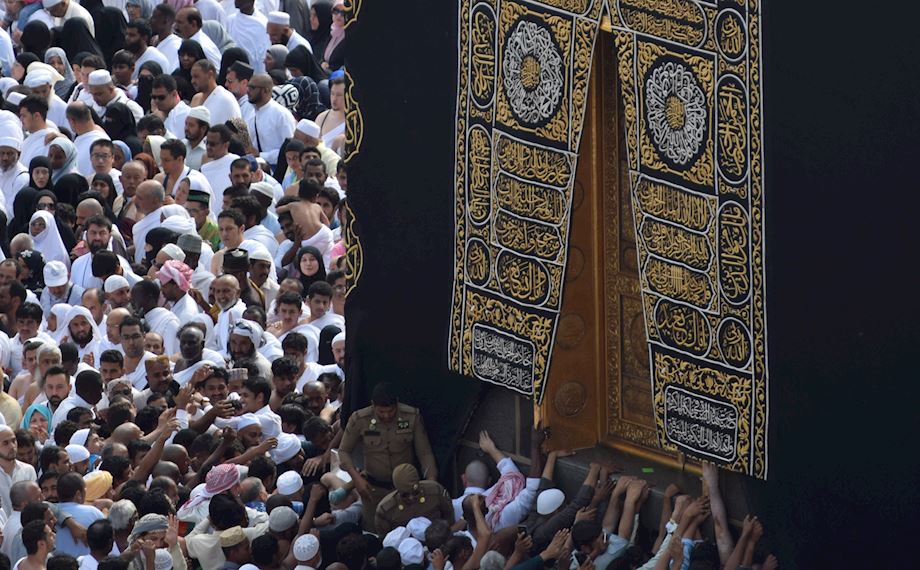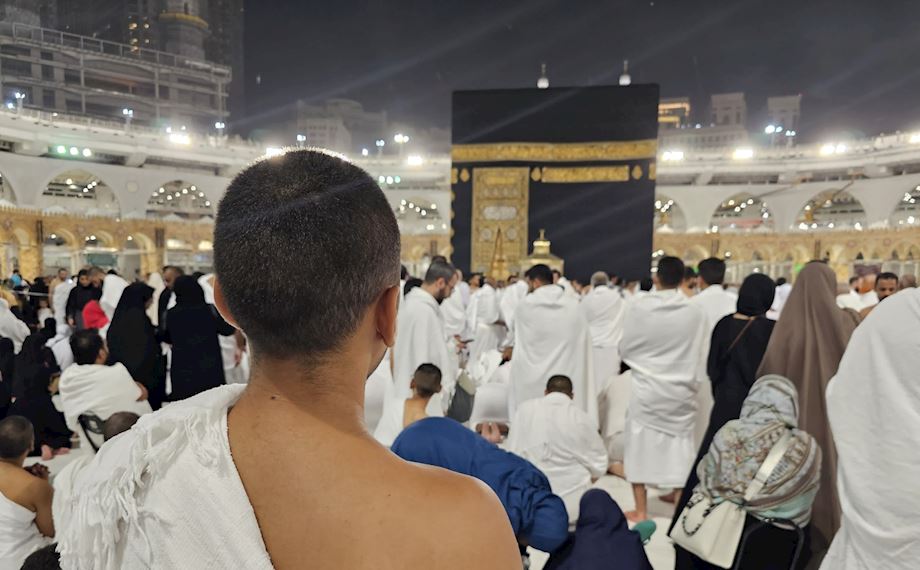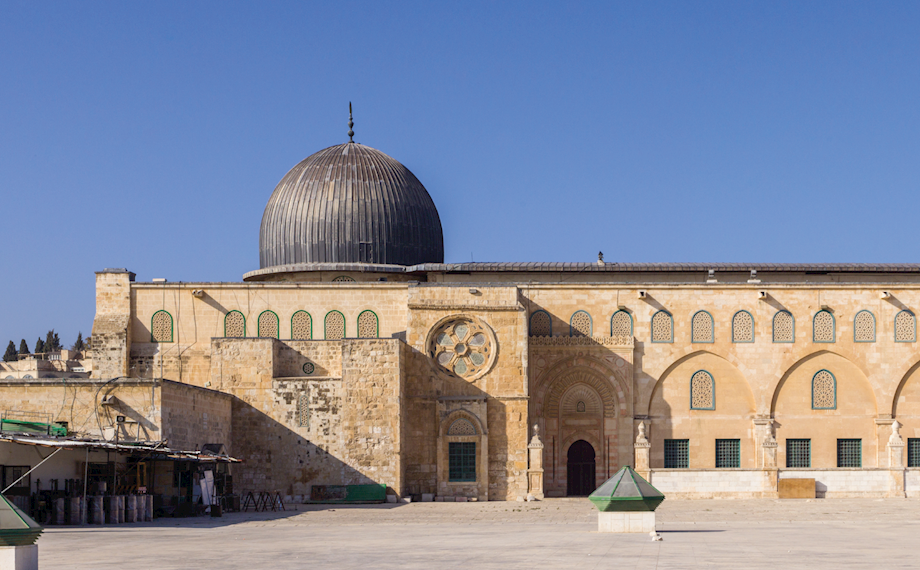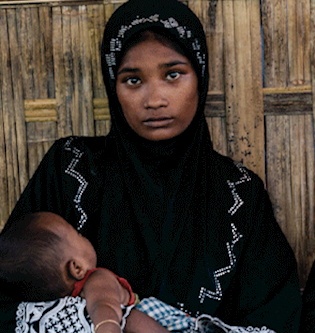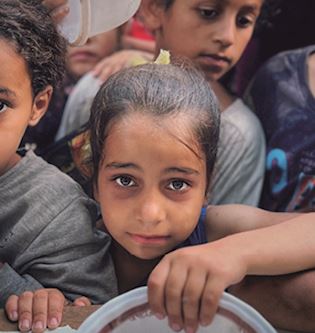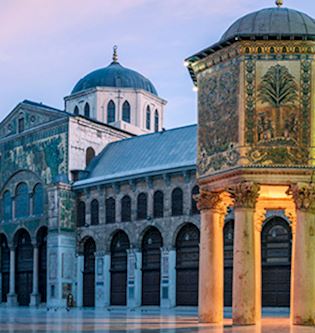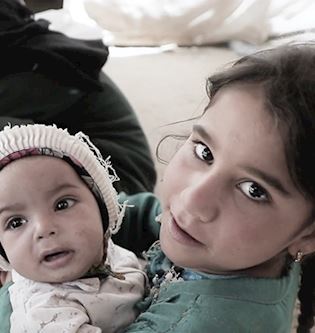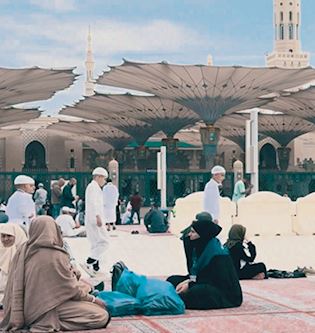Your Guide to Wearing the Ihram for Hajj and 'Umrah

Every year, millions of Muslims travel from all four corners of the Earth to visit the House of Allah (swt) in Makkah. Although Hajj can only be performed in the sacred month of Dhul Hijjah, pilgrims can perform ‘Umrah throughout the year. Advantageous times for the ‘lesser pilgrimage’ include the blessed month of Ramadan, for massive rewards, and the winter months to make the rites more bearable in the cooler weather.
In this article we will cover the rules of Ihram and how to wear it.
You can learn more about the other aspects of Hajj and ‘Umrah in our other dedicated articles, or by downloading our FREE Interactive Guide to Hajj and ’Umrah.
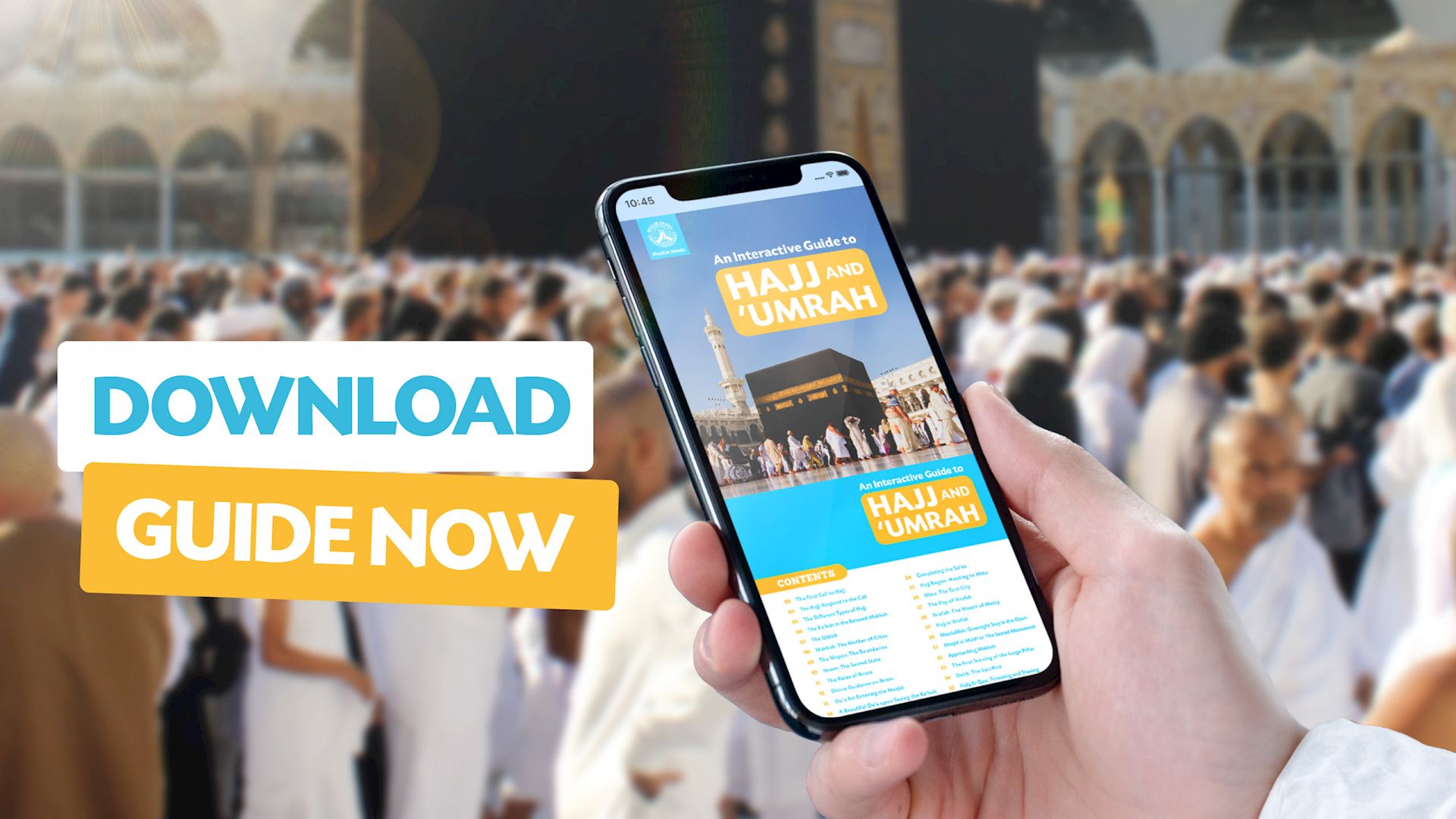
What is Ihram?
Whilst we usually associate the Ihram with the two white cloths worn by pilgrims, it is actually much deeper than this. The Ihram is a sacred state of both mind and body into which a Muslim enters before performing Hajj or ‘Umrah.
To enter into the Ihram, one must make the intention for Ihram and put on the Ihram clothing before passing one of the Miqat (boundary marker) points. You will also need to make the intention for what act of worship you will be performing – e.g. Hajj Tamattu‘ or ‘Umrah.
The Ihram is a state of mind and, just like when you begin praying or fasting, certain things which would ordinarily be halal for you are now haram (see below). It is important to maintain this state of mind as you proceed through the different stages of Hajj and ‘Umrah.
What is Ihram for men?
For many of us living in the West, figuring out how to wear the Ihram clothes can be quite daunting. A number of questions will come to mind - How do I put it on? Will it fall off? If you’re used to wearing a lungi/izar/sarong it won’t be as much of a culture shock. But for the rest of us, this step-by-step guide should help you get your head around it all.
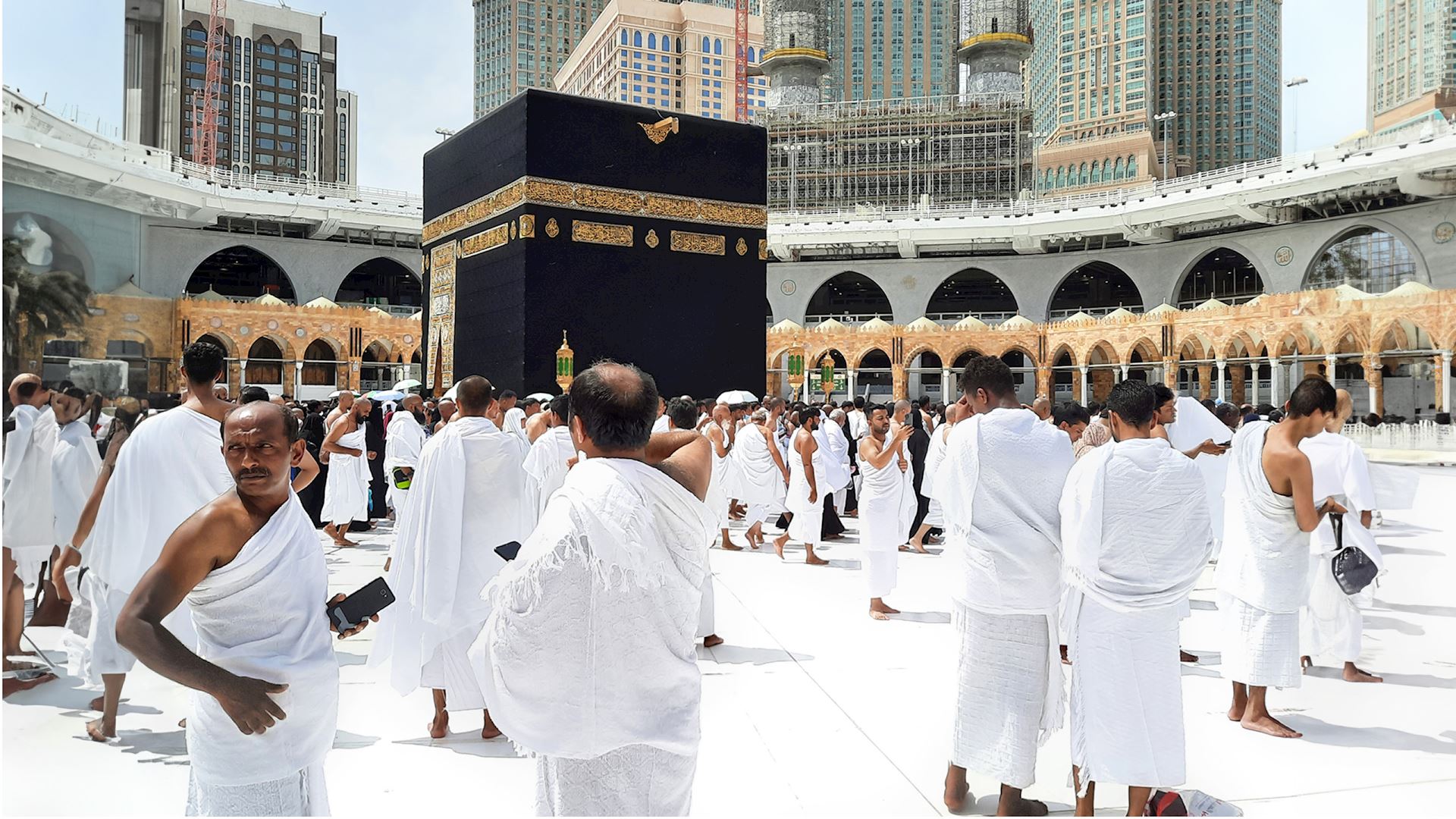
How to put on the Ihram for men
Before you put on the clothes of Ihram, it is highly recommended that you perform ghusl, trim any hair on the body/face that requires it and trim your nails. You can then proceed to put on the clothes of Ihram.
What you will need:
- Two white cloths - you can buy these online, at any Islamic store or even in Madinah, Saudi Arabia before you set off for Makkah
- An Ihram/money belt (optional)
- A pair of sandals that don’t cover the toes or the top of your feet
One of the white cloths will be for your upper body and the other for your lower half. The upper garment is called the Rida and the lower one is called the Izar. It is impermissible to wear any undergarments whilst in Ihram and so we recommend using a thick, towel-like cloth for the upper and lower body as it will be more concealing and will not become translucent when you sweat. Try to get an Ihram cloth which is long enough so you can wrap it well.
Did you know? - The divine Rida and Izar
The Messenger of Allah (saw) said, ‘Allah, the Exalted and Glorious, said, “Glory is His lower garment and Majesty is His upper garment and (Allah says) He who contends with Me regarding them I shall torment him.”’ [Muslim]
The method outlined below is one of a number of different ways to put on the Ihram. This guide is an easy and straightforward way, especially for a first timer.
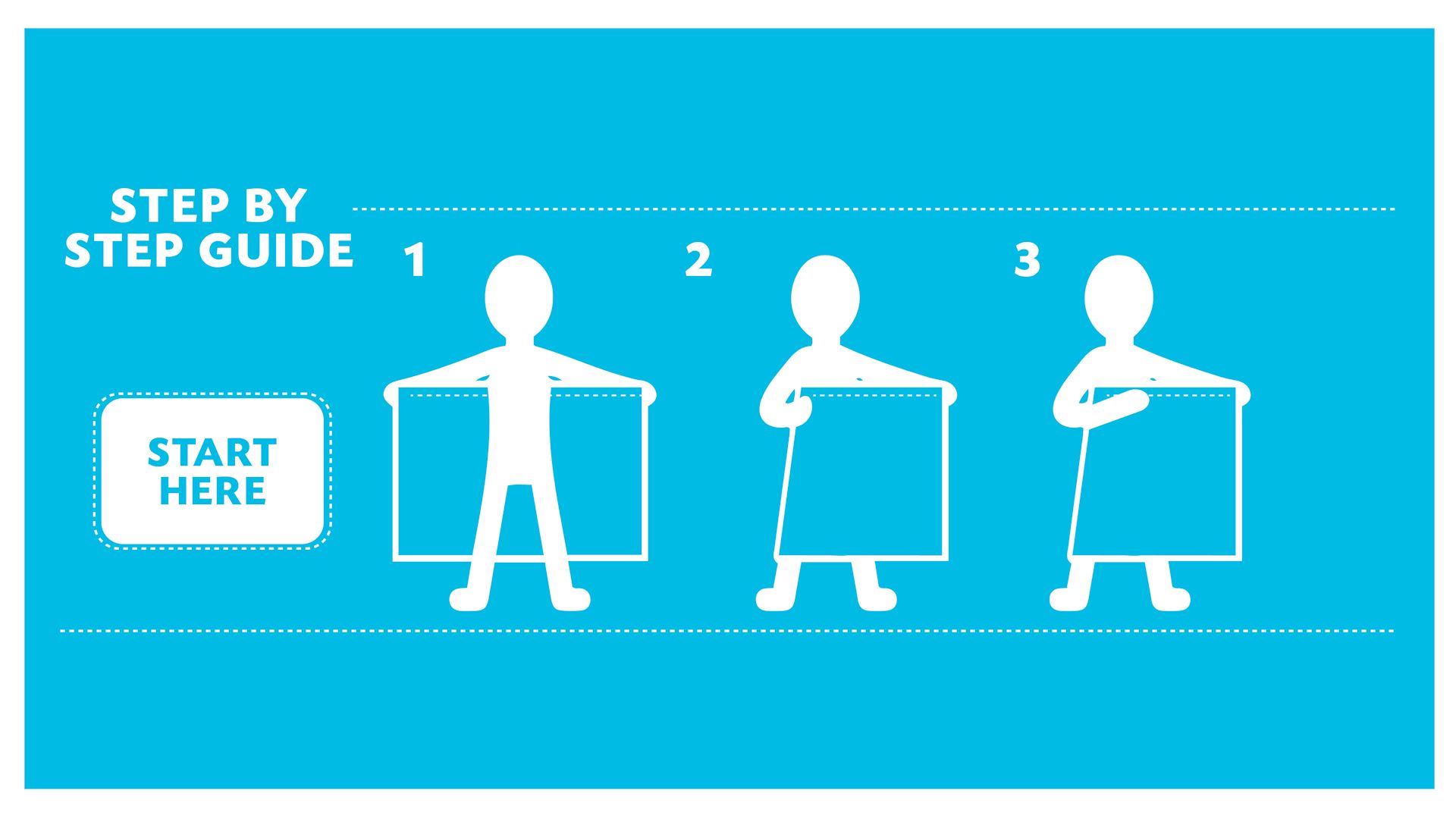
Step 1: Stand with your legs wide apart. This will make moving them to walk much easier when the Ihram has been wrapped fully.
Step 2: Place one of the white cloths (preferably a thick one) to one side of your body, with half in front of you and the other half behind you. Wrap it around your lower body, whilst suppressing your stomach, so that the two sides of the cloth meet on the opposite side. It will be as though you have folded the cloth in half, with your body sandwiched between the two halves.
Step 3: Pinch the two sides of the cloth together firmly at the point they meet so it is secure around your body. The top of the cloth should be well above your navel, and the bottom of the cloth should be lower than your knees.
Step 4: Holding the pinched part firmly in place by your side, bring the ends of the two halves forward and fold them together over the front of your body.
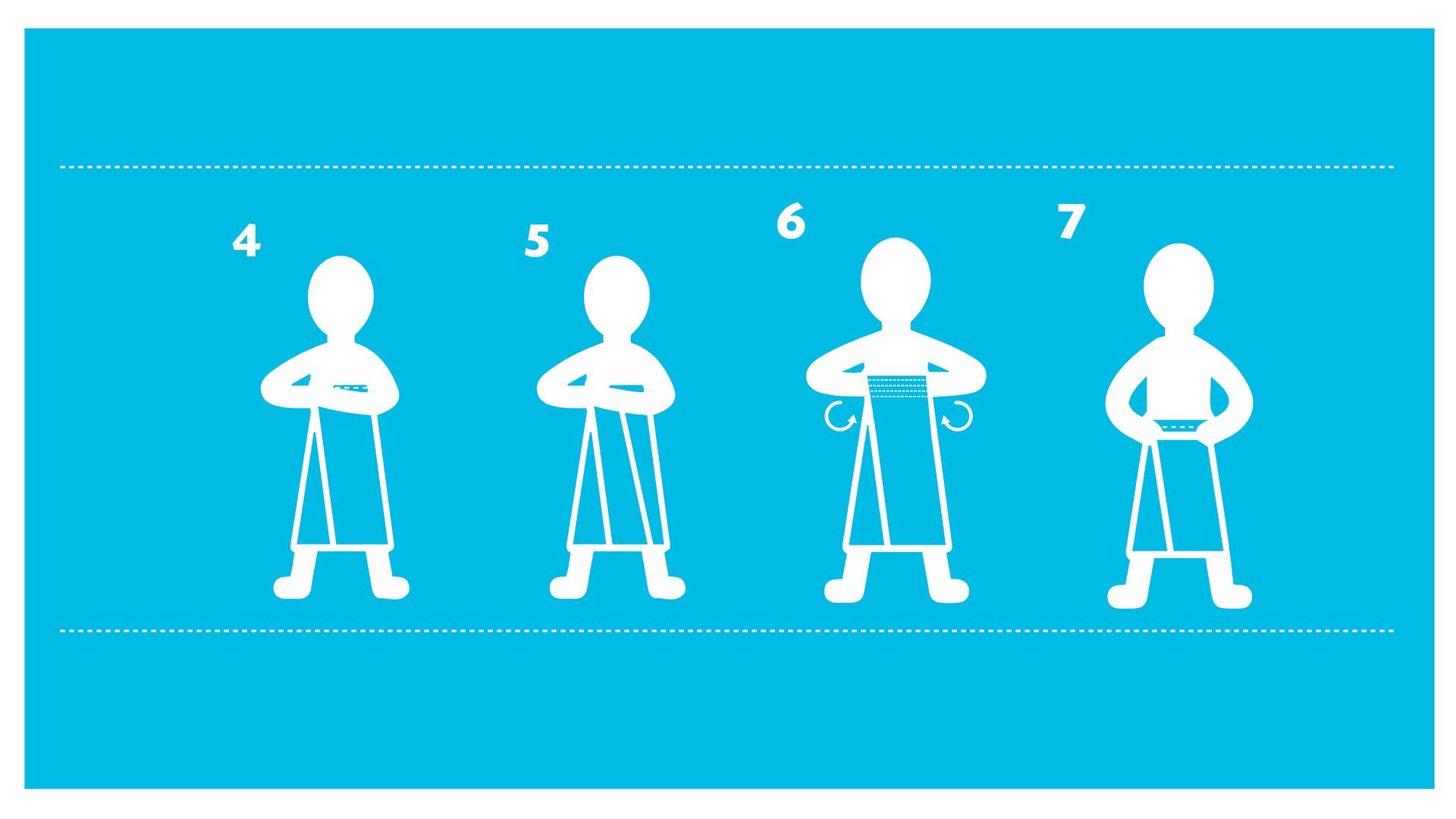
Step 5: Depending on how long the cloth is, you may need to fold it back and forth multiple times. This will create a thick layer over the front of your lower body ensuring modesty.
Step 6: Now that you’ve wrapped the Ihram around your lower body, it is time to ensure that it holds securely and doesn’t fall off. Holding your stomach in, take hold of the top of the wrapping (i.e. the part that is highest up on your body) and begin rolling and tucking it in a downwards direction. Once, you’ve made a few tight folds, you can release your stomach and continue rolling. Ensure that you keep your navel (including your belly button) covered. The Ihram should now be firmly wrapped around your lower body – even if you tug at it, it should hold.
Step 7: For extra security, it is permissible to wear an Ihram belt or a money belt around your waist. You can do this by putting on the belt about halfway through step 6, and then completing the step by rolling the remainder of the cloth over the belt.
Step 8: By now, your lower body should be covered. Now it is time to cover the upper half. Take the second cloth and hold it behind your back.
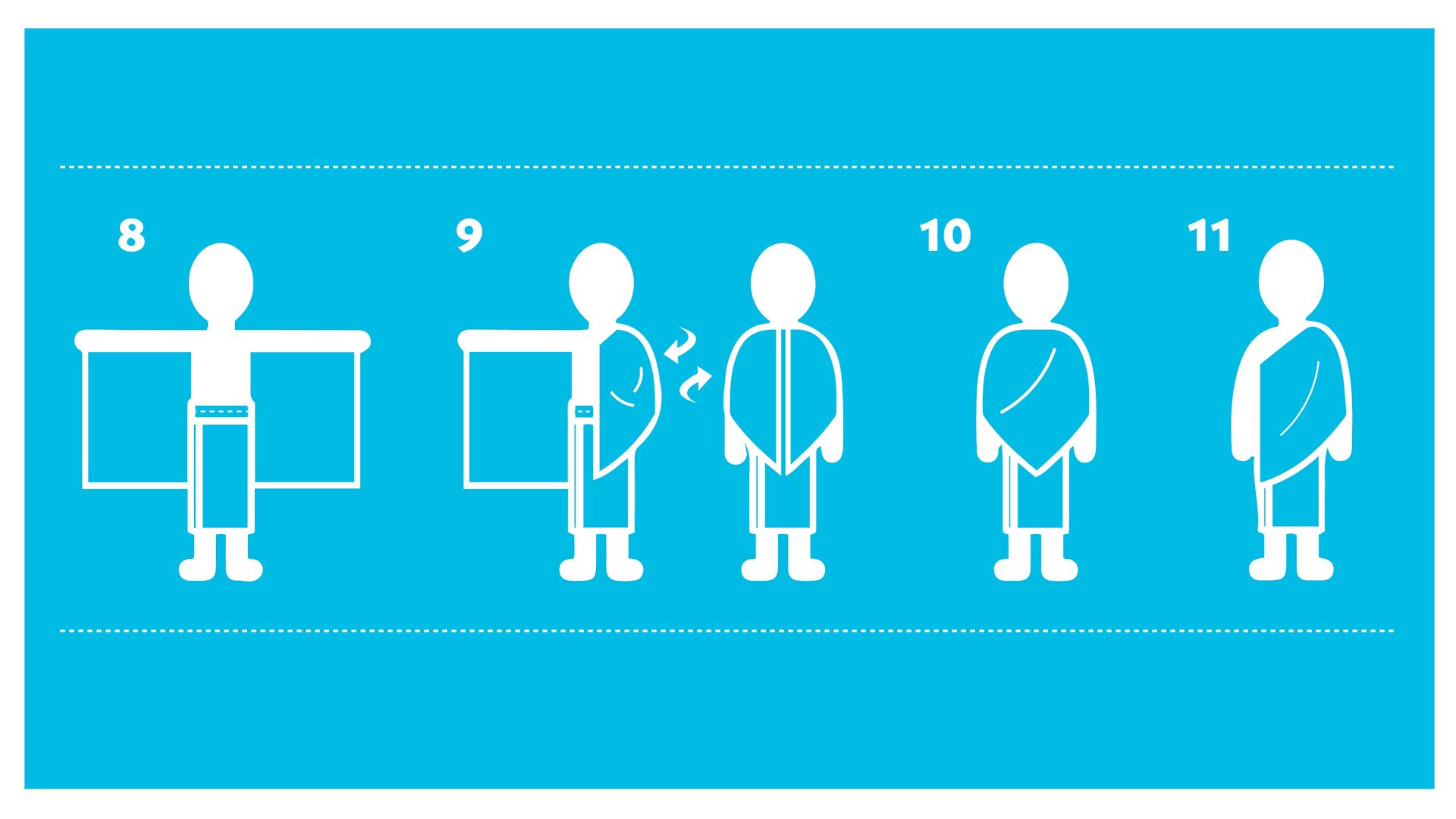
Step 9: Bring the two sides of the cloth over each shoulder so that the entire cloth can rest on your body without you holding it. Ensure that the right side is longer and is hanging in front of you lower than the left. This is because we will need one side longer to wrap the cloth over the body.
Step 10: Bring the longer side of the cloth around the front of your body and throw it over your left shoulder so that the cloth covers your torso. To prevent it from falling, you can take it around your back and bring it over your right shoulder again.
Step 11: During Tawaf in Hajj or ‘Umrah, you will need to expose your right shoulder, which is known as Idtiba’a. To do this, instead of placing both sides of the cloth over your shoulders in step 9, only place the left side over your left shoulder, and bring the right side in front of you, under your right arm and then throw it over your left shoulder.
Now proceed to pray two nafl rak‘ahs. It is recommended to recite Surah al-Kafirun [109] in the first rak‘ah and Surah al-Ikhlas [112] in the second rak‘ah (after Surah al-Fatihah).
You can now make your intention to perform Hajj Tamattu‘ or ‘Umrah by saying:

You are now in Ihram!
Note: We recommend practicing putting your ihram on a few times at home to familiarise yourself with the steps.
Did you know? - Why males uncover their right shoulder during Tawaf
The Prophet (saw) uncovered his right shoulder (Idtiba’a) and walked briskly (Ramal) in the first three circuits of the Tawaf originally to show his strength to the polytheists of Makkah. This is because they claimed that the Muslims that migrated from Makkah to Madinah had become sick and weak. This then became the Sunnah as is seen from the following Hadith:
On the authority of Ibn Abbas (ra) who said, ‘The Messenger of Allah (saw) only performed the Sa‘ee [between Mount Safa and Mount Marwah] and walked quickly (Ramal) round the House to show the polytheists his strength.’ [Muslim]
What is Ihram for ladies?
The Ihram for women is not as restricted as it is for men. You begin by performing ghusl, trimming unwanted hair and trimming your nails.
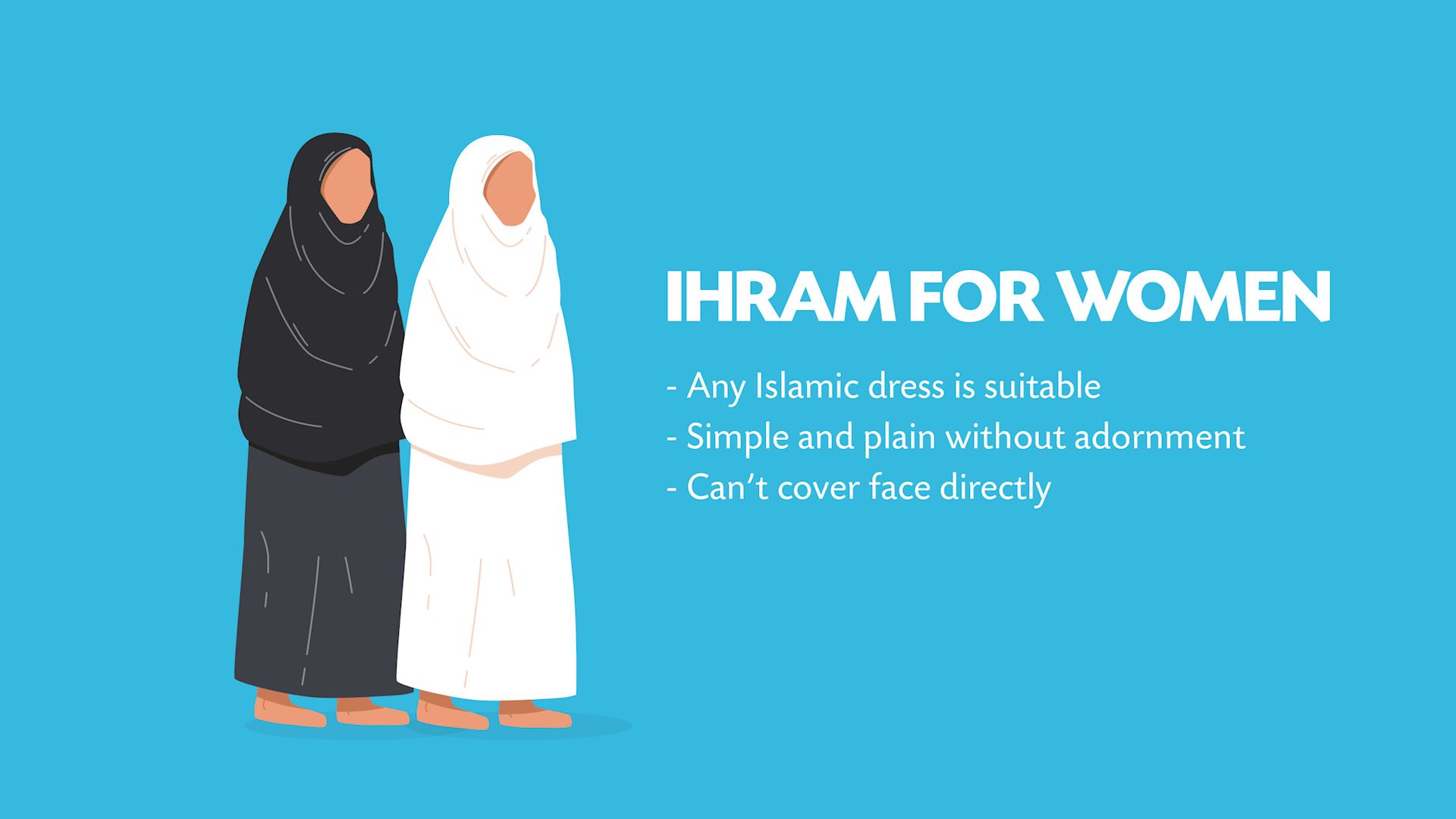
You can wear your Hijab and Abaya/Jilbab as usual, covering the entire body, without any specific requirements for colour. However, it is best to wear something simple and plain without adornments. White/black garments may be best. Women can also wear regular socks and footwear that cover their feet.
If you usually cover your face, there are some restrictions during Ihram. You cannot cover your face with any cloth that touches your face directly. However, there are special caps that can be worn which have some fabric hanging off.
When do you put Ihram on?
The Ihram must be put on when you reach the Miqat points (see map below) - these are the boundary markers of where Ihram begins.
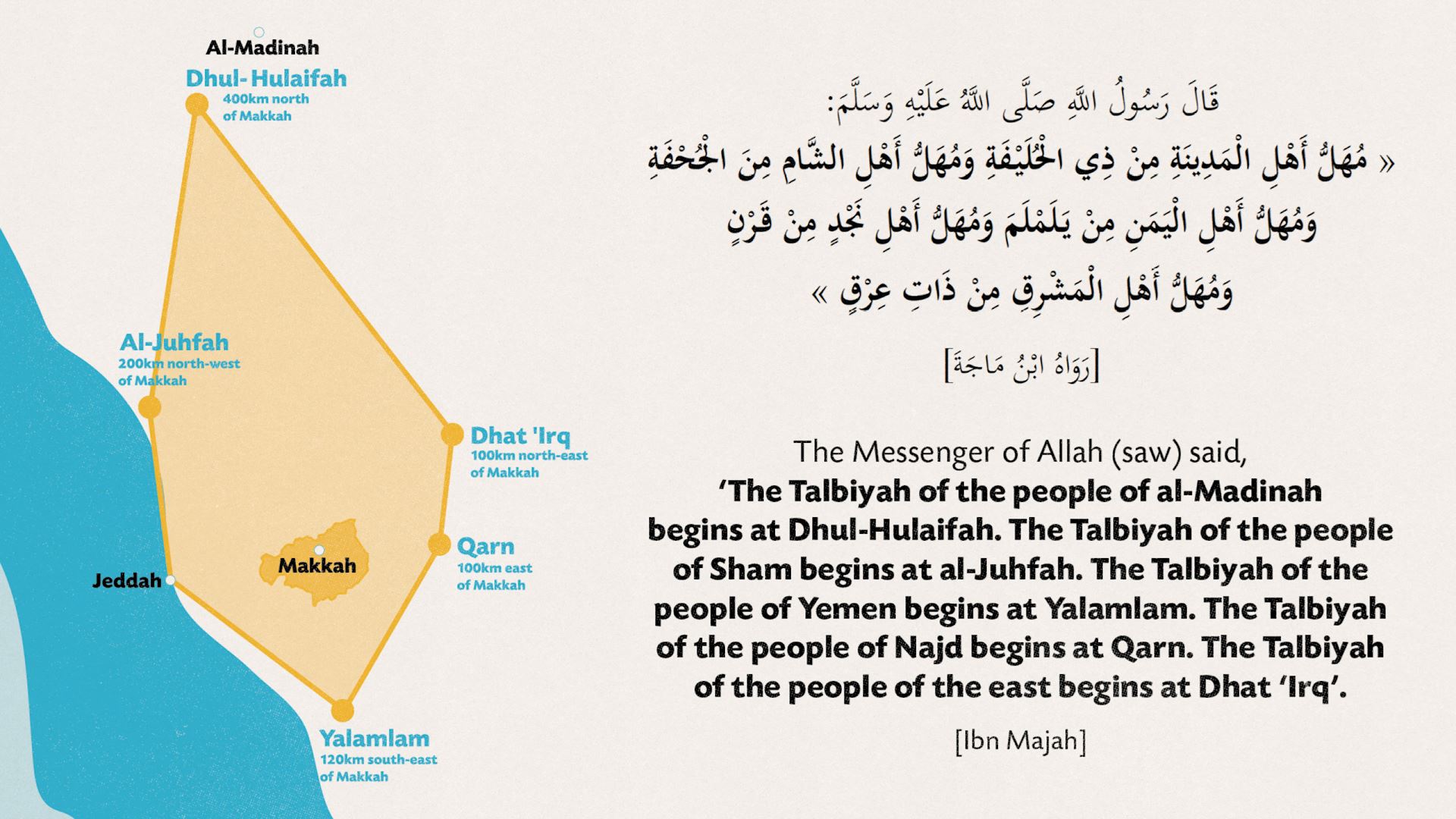
If you’re flying into Jeddah and then travelling directly to Makkah to perform Hajj or ‘Umrah, you will need to put on your Ihram before you reach Jeddah airport as it falls within the Miqat. An announcement will be made on the plane around an hour before landing. It is common for people to put the Ihram on before their flight or during a layover.
For ease, it might be worth considering visiting Madinah first before travelling to Makkah to perform the rites. This way, you can put your Ihram on after leaving Madinah and when you reach the Dhul-Hulaifah Miqat point.
What is prohibited during Ihram?
The Ihram is a sacred state of mind and body in which we must enter to perform Hajj and ‘Umrah. The following actions are prohibited whilst you are in Ihram:
- Fighting or quarrelling with others.
- Cursing, talking sinfully or using any bad language.
- Using perfume. This includes scented soaps, shampoos, wipes, lotions etc.
- Cutting, plucking or removing any hair or nails. (Broken nails can be removed).
- Engaging in any sexual activity.
- Killing, hunting or helping others hunt any animals.
- Getting married, proposing or helping others to marry.
Sponsor Hifz Students to Perform ‘Umrah
Alhamdulillah, we have launched a new amazing initiative for you to gain the rewards of ‘Umrah. Our annual ‘Umrah sponsorship for Hifz students in the Blessed Masjid Al-Aqsa is already underway. The first group of 30 young Palestinian Hifz students left Jerusalem in August 2023 to perform their first ever ‘Umrah.
These young Muslims come from disadvantaged backgrounds in East Jerusalem, Palestine where 70% of families are living below the poverty line.
For just £600, you can sponsor this life-changing journey which will be a memory for them to cherish for the rest of their lives, whilst inspiring them to excel in their journey with the Noble Qur’an. You can also contribute any amount to help them visit the House of Allah (swt).
Receiving the rewards of ’Umrah, of bringing joy to a Muslim, and of relieving a burden from a believer are just some of the benefits of getting involved – an opportunity you cannot miss.





